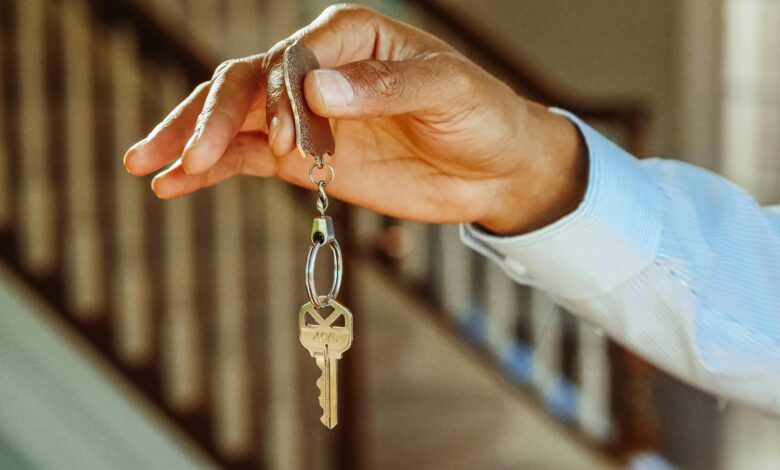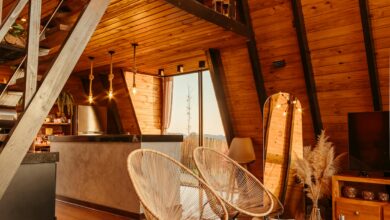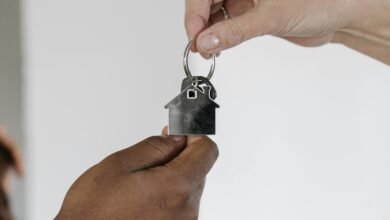How to Choose the Right Rental Property for Your Needs

Renting a property is a significant decision that can impact your quality of life, financial stability, and overall happiness. Whether you’re looking for an apartment, house, or condo, finding the right rental property requires careful consideration of your needs, budget, and lifestyle. In this article, we’ll guide you through How to Choose the Right Rental Property for Your Needs , covering key factors to consider, practical tips, and common pitfalls to avoid.
1. Assess Your Budget
Before you start browsing listings, it’s essential to determine how much you can afford to spend on rent each month. Rent is typically one of the largest expenses in your budget, so setting a realistic limit is crucial.
A. The 30% Rule
- Financial experts recommend spending no more than 30% of your monthly income on housing costs (rent + utilities). This ensures you have enough left over for other essentials like food, transportation, and savings.
- If you’re earning $4,000 per month, for example, aim to keep your rent below $1,200.
B. Include Additional Costs
- Don’t forget to factor in additional expenses such as:
- Utilities: Electricity, water, gas, internet, and cable.
- Renter’s Insurance: Protects your belongings and liability.
- Parking Fees: Some properties charge extra for parking spaces.
- Pet Deposits/Fees: If you have pets, expect additional costs.
- Maintenance Responsibilities: Clarify whether you or the landlord will handle repairs.
C. Security Deposit and Move-In Costs
- Most landlords require a security deposit (often equal to one or two months’ rent) plus the first month’s rent upfront. Ensure you have enough savings to cover these initial costs.
2. Determine Your Must-Have Features
Every renter has unique priorities when it comes to their living space. Make a list of non-negotiable features and nice-to-haves to narrow down your search.
A. Location
- Proximity to Work/School: Consider commute times and transportation options (public transit, biking, driving).
- Neighborhood Safety: Research crime rates and read reviews about the area.
- Amenities Nearby: Look for access to grocery stores, restaurants, parks, gyms, and schools if needed.
B. Size and Layout
- Number of Bedrooms/Bathrooms: Ensure the property accommodates your household size comfortably.
- Space for Work/Life Balance: If you work from home, prioritize properties with dedicated office spaces or quiet areas.
- Storage: Check for sufficient closet space, basements, or attics if storage is important to you.
C. Property Type
- Decide whether you prefer an apartment , house , townhome , or condo based on your lifestyle and preferences.
- Apartments: Often more affordable, with shared amenities like gyms and pools.
- Houses: Provide more space and privacy but may come with higher maintenance responsibilities.
- Condos: Combine the benefits of apartments and houses, often with HOA rules.
D. Pet-Friendly Policies
- If you have pets, confirm that the property allows them and inquire about breed/size restrictions and associated fees.
3. Evaluate the Property’s Condition
Once you’ve identified potential rentals, inspect the property thoroughly to ensure it meets your standards and safety requirements.
A. Structural Integrity
- Check for signs of damage, such as water stains, mold, cracks in walls, or uneven floors.
- Test appliances (e.g., stove, refrigerator, HVAC system) to ensure they’re in working order.
B. Safety Features
- Look for smoke detectors, carbon monoxide detectors, secure locks, and adequate lighting.
- Ask about security measures like gated entry, surveillance cameras, or on-site staff.
C. Noise Levels
- Visit the property at different times of day to assess noise levels from neighbors, traffic, or nearby businesses.
D. Pest Control
- Inquire about pest control policies and whether there have been any recent infestations.
4. Understand Lease Terms and Policies
Carefully review the lease agreement before signing to avoid surprises later. Pay attention to the following:
A. Lease Duration
- Decide whether you want a short-term lease (e.g., month-to-month) for flexibility or a long-term lease (e.g., 12 months) for stability.
B. Rent Increases
- Ask if rent increases are allowed during the lease term and what the policy is for renewals.
C. Maintenance Responsibilities
- Clarify who is responsible for repairs and how requests should be submitted.
D. Guest Policies
- Understand any restrictions on hosting guests or subletting the property.
E. Termination Clauses
- Review penalties for breaking the lease early and conditions under which the landlord can terminate the agreement.
5. Research the Landlord or Property Management Company
The quality of your rental experience largely depends on the landlord or property management company. Do some due diligence before committing.
A. Online Reviews
- Search for reviews about the landlord or property management company to gauge their reputation for responsiveness and fairness.
B. Ask Current Tenants
- If possible, speak with current tenants to learn about their experiences with maintenance, communication, and overall satisfaction.
C. Red Flags
- Be cautious of landlords who:
- Pressure you to sign quickly without answering questions.
- Refuse to provide a written lease agreement.
- Have a history of disputes or evictions.
6. Consider Future Plans
Think about how the rental fits into your long-term goals and plans.
A. Job Stability
- If you anticipate changing jobs soon, choose a location with flexible lease terms or proximity to multiple employment hubs.
B. Family Growth
- If you plan to expand your family, ensure the property has enough space or is located in a family-friendly neighborhood.
C. Resale Value
- Even though you’re renting, living in a desirable area can make it easier to sell your belongings or transition to homeownership later.
7. Tips for Viewing Properties
When touring potential rentals, ask thoughtful questions and take notes to compare options effectively.
A. Bring a Checklist
- Use a checklist to evaluate each property consistently based on your must-have features.
B. Take Photos
- Document the property’s condition to reference later and ensure transparency during move-out inspections.
C. Test Everything
- Open and close doors/windows, flush toilets, turn on faucets, and test electrical outlets to identify issues.
8. Avoid Common Pitfalls
Here are some mistakes to avoid when choosing a rental property:
A. Rushing the Decision
- Take your time to weigh all options and don’t feel pressured to settle for the first property you see.
B. Ignoring Hidden Costs
- Factor in utility bills, parking fees, and other recurring expenses to avoid budget strain.
C. Overlooking Lease Details
- Always read the fine print to understand your rights and obligations as a tenant.



